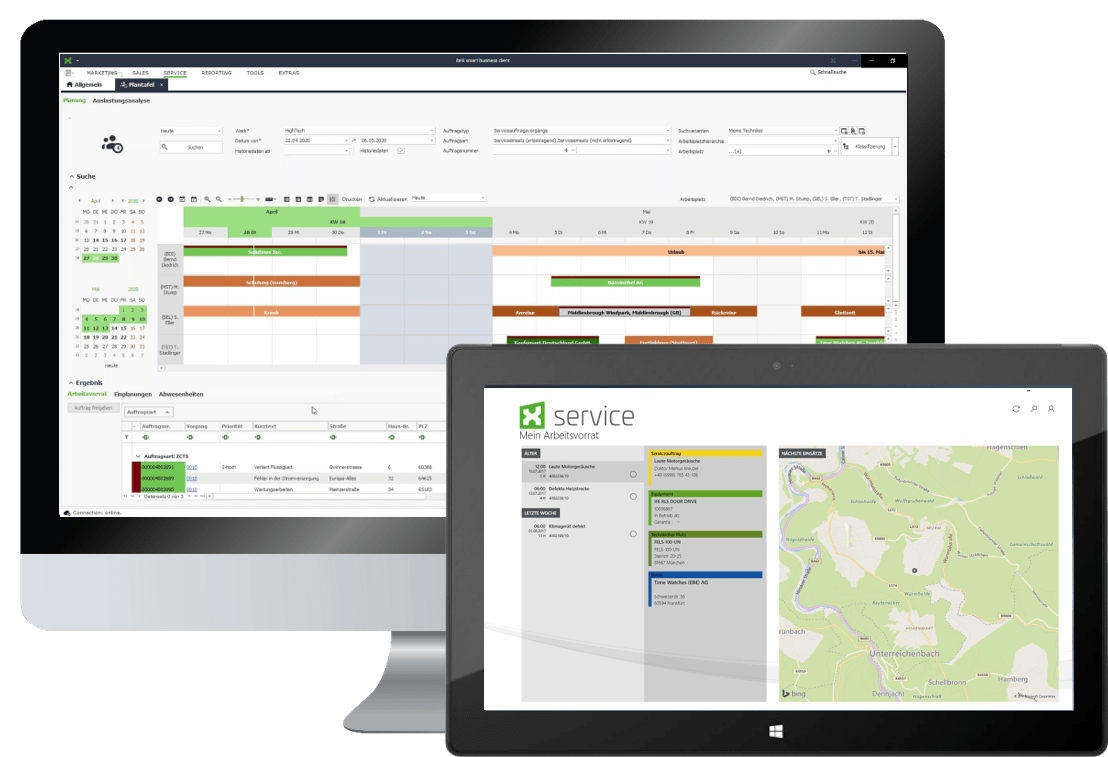Customer satisfaction as a success indicator in service
More and more companies are upgrading their service in the direction of digitalization. New technologies such as AI, IoT and predictive maintenance are not only changing service itself, but also customer requirements. Thanks to the rapid increase in new technologies, the factors for a purchase are also no longer what they once were. While quality, variety and price still have a significant influence on the decision to buy, another increasingly important factor should not be underestimated: the appreciation of customers and their concerns. Only by taking this into account can customer satisfaction be achieved.

The following article was published in the SERVICE TODAY issue 3/2021 of the KVD. Click here for the magazine.
In times of digitalization, good customer service is crucial for customer satisfaction and successful customer relationships:
Terms dismissed as meaningless buzzwords such as customer experience, lifetime value, and service excellence have contributed significantly to this development. Nowadays, these terms and their implementation determine who does the business and who goes away empty-handed. Because the demands on products and services have changed almost completely: Today, the customer wants to be the focus of attention. And not only at the beginning of their relationship with the company, but also after the purchase. And this is exactly where the service department comes into play: In times of digitalization, good customer service is significantly involved in a sustainable and successful customer relationship – if not responsible. To this end, of course, there are a variety of metrics that can be used to measure the success of the department. There are key figures:
- that say something about the customer relationship
- to measure the performance of the service staff
- to evaluate the work of the entire customer service team.
In the following, we will focus on the first category and, in particular, on the “customer satisfaction” metric.
Staying close to customers and integrating them into internal processes:
Increasing customer satisfaction should be the top priority of a service department these days. Only those who are satisfied will buy again or even more frequently and more and ultimately recommend the company to others. However, achieving a high level of customer satisfaction is also a free skate.
Nowadays, everyone expects 24/7 availability for their concerns and issues. If the service advisor is not available at the moment or the open questions are not answered satisfactorily, then people often simply turn to social media. If this happens, especially in the case of a complaint, it is often very difficult for the company itself to intercept the “shitstorm” that has already arisen.
So how do you stay as close as possible to your customers and capture their moods early on? The answer to this question is both simple and difficult: you have to integrate the customer seamlessly into your own processes. Everyone in the company must be able to provide information at any time in order to help the customer with his or her concerns. It doesn’t matter whether it’s internal sales, sales or even the billing department or marketing. Externally, a company should always appear with a “one face to the customer” and be aware of all customer processes at all times.
What’s more, customers should be provided with a self-service before the first contact is made, so that they can perhaps even solve their problem themselves. A chatbot, which can be integrated both on the normal website of a company and – if available – in the company’s own service portal for customers, is a tried-and-tested and now also widely used option here. The chatbot, in turn, must of course be capable of providing information. This means that it must know which machines the customer is using, what their maintenance cycles are, or which spare parts are currently in stock for the equipment used. However, this high service level of a digital assistant can only be achieved if it is also fully connected to all surrounding systems such as CRM, ERP, but also the store.
The integration of IoT scenarios into existing system and process landscapes is indispensable:
Another reliable method to sustainably inspire customers is to solve problems before they even arise. Probably the best-known application from Industry 4.0 is predictive maintenance.
Real-time processing of underlying machine data enables forecasts that form the basis for reducing downtime. This requires the interpretation of sensor data. Sensor technology is already widely used in industry today. Every machine and even nearly every electronic component contains a multitude of sensors and, along with them, valuable information about the machine’s condition. However, in order to benefit from the potential that lies in machine information, it is necessary that it is docked onto existing process and system landscapes. As you can see, the topic of integration is indispensable!
Ideally, the process looks like this: the machine used by the customer is networked with your systems in such a way that a service message is automatically triggered when certain measuring points are exceeded. This is then forwarded to a service technician, who can ideally solve the problem immediately remotely. If manual intervention is still necessary, your service solution naturally also knows which of your technicians is currently in the vicinity of the customer and has the necessary skills to repair the machine, and sends this service order directly to his mobile device.
Ultimately, we are in a win-win situation here: your service technician is already on his way before the machine breaks down, and downtime at the customer is minimized or even eliminated altogether. The prerequisite for such a continuous process to work is, of course, the use of a service solution that can seamlessly process the incoming information.
For example, itmX’s software solution seamlessly accesses SAP ERP or S/4HANA and can also be easily connected to surrounding systems such as the online store. Networking the systems with each other therefore not only simplifies and accelerates internal processes, but also has a direct effect on increasing customer satisfaction.

